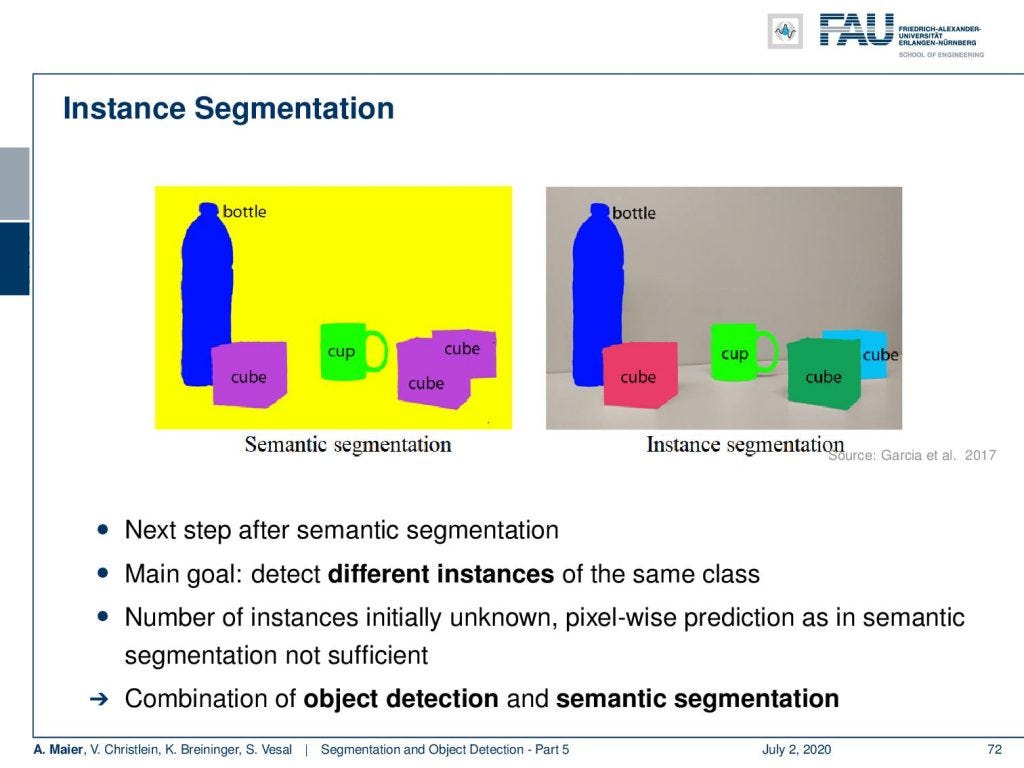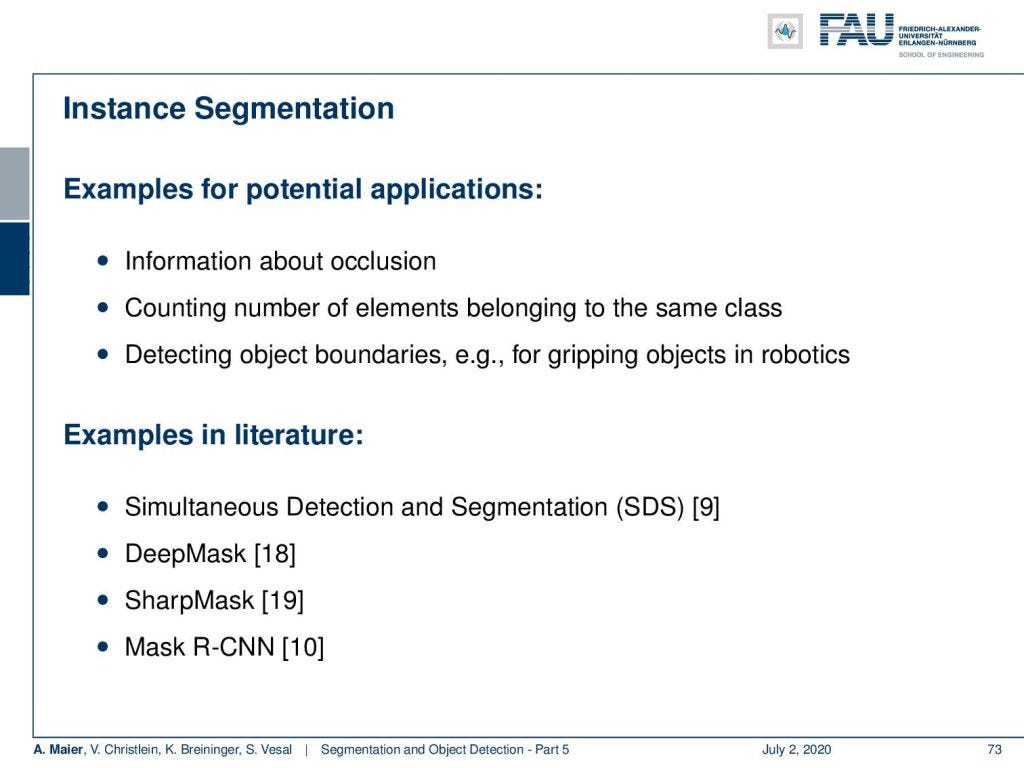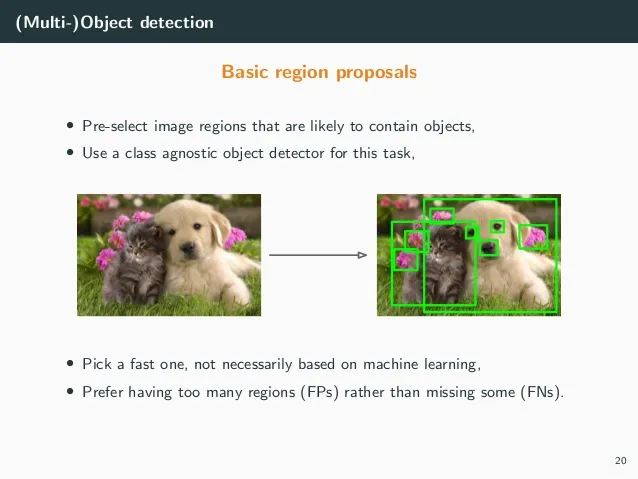Welcome back to deep learning! Today, we want to talk about the last part of object detection and segmentation. We want to look into the concept of instance segmentation.

Semantic segmentation vs. instance segmentation. Image under CC BY 4.0 from the Deep Learning Lecture.
So, let’s have a look at our slides. You see this is already the last part. Part five and now we want to talk about instance segmentation. We do not just want to detect where pixels with cubes are instead of pixels of cups. We want to really figure out which pixels belong to what cube. This is essentially a combination of object detection and semantic segmentation.

Examples for instance segmentation approaches. Image under CC BY 4.0 from the Deep Learning Lecture.
Examples for potential applications are information about occlusion, counting the number of elements belonging to the same class, detecting object boundaries for example of gripping objects in robotics. This is very important and there are examples in the literature for simultaneous detection and segmentation, DeepMask, SharpMask, and Mask RCNN in [10].

Mask RCNN is one of the mostly wide-spread instance segmentation approaches. Image under CC BY 4.0 from the Deep Learning Lecture.
Let’s look at [10] in a little more detail. We essentially go back to the storage. We combine object detection and the segmentation. We use RCNN for object detection. It essentially solves the instance separation. Then, the segmentation refines the bounding boxes per instance.
#deep-learning #data-science #fau-lecture-notes #artificial-intelligence #machine-learning #deep learning
